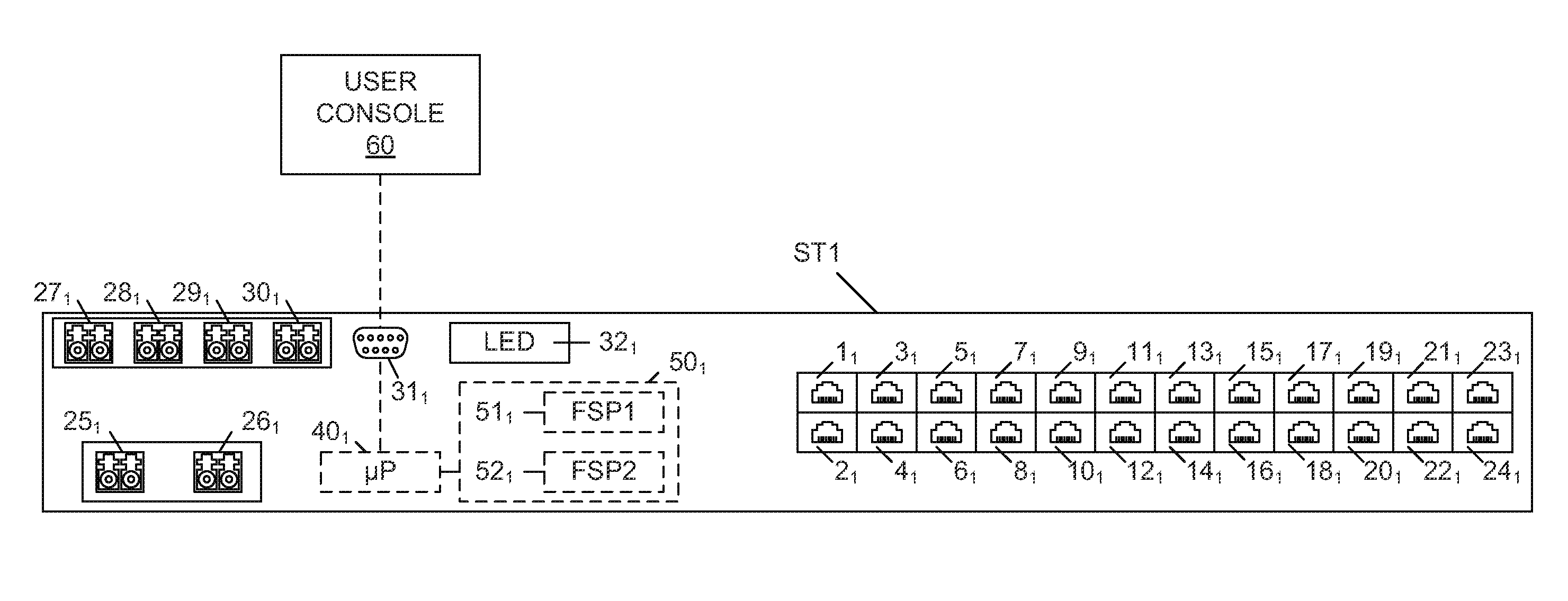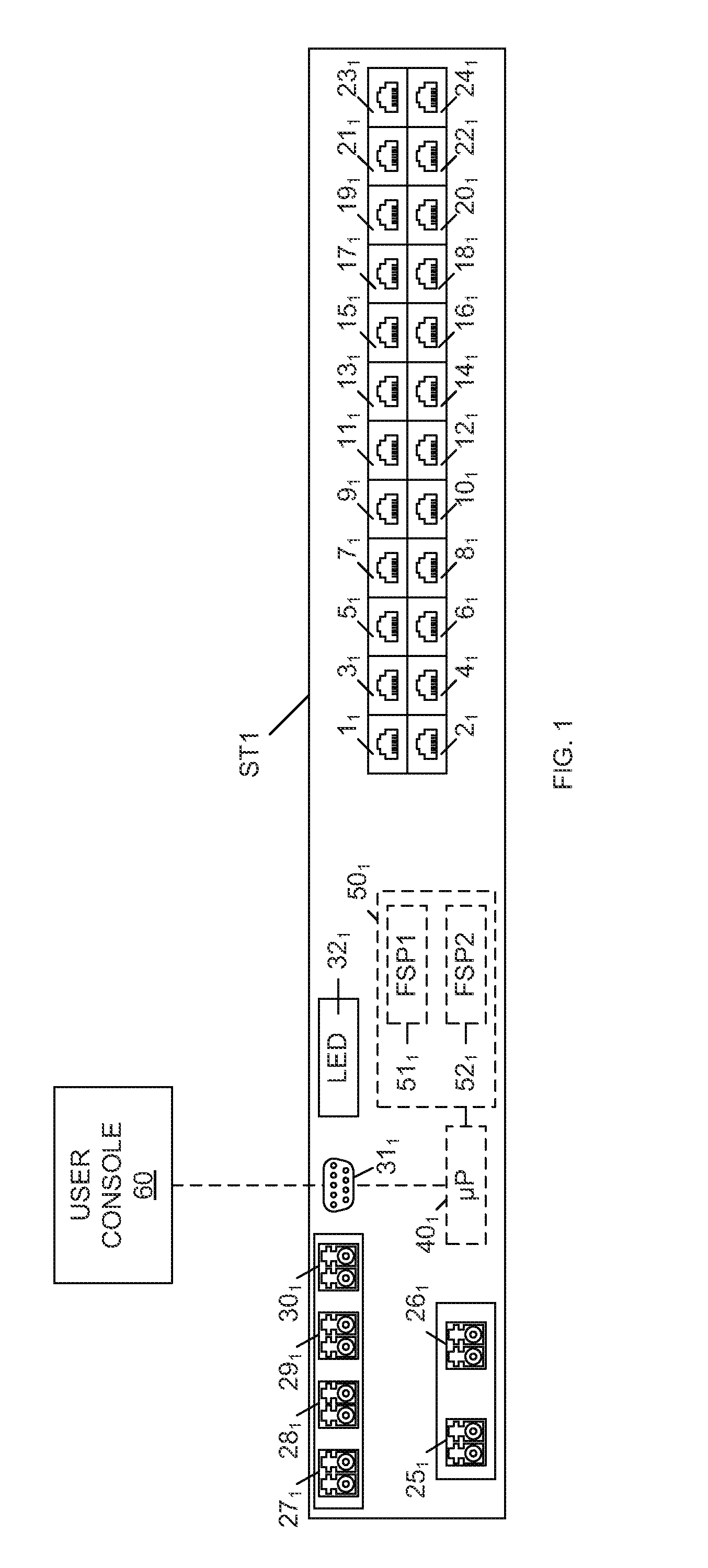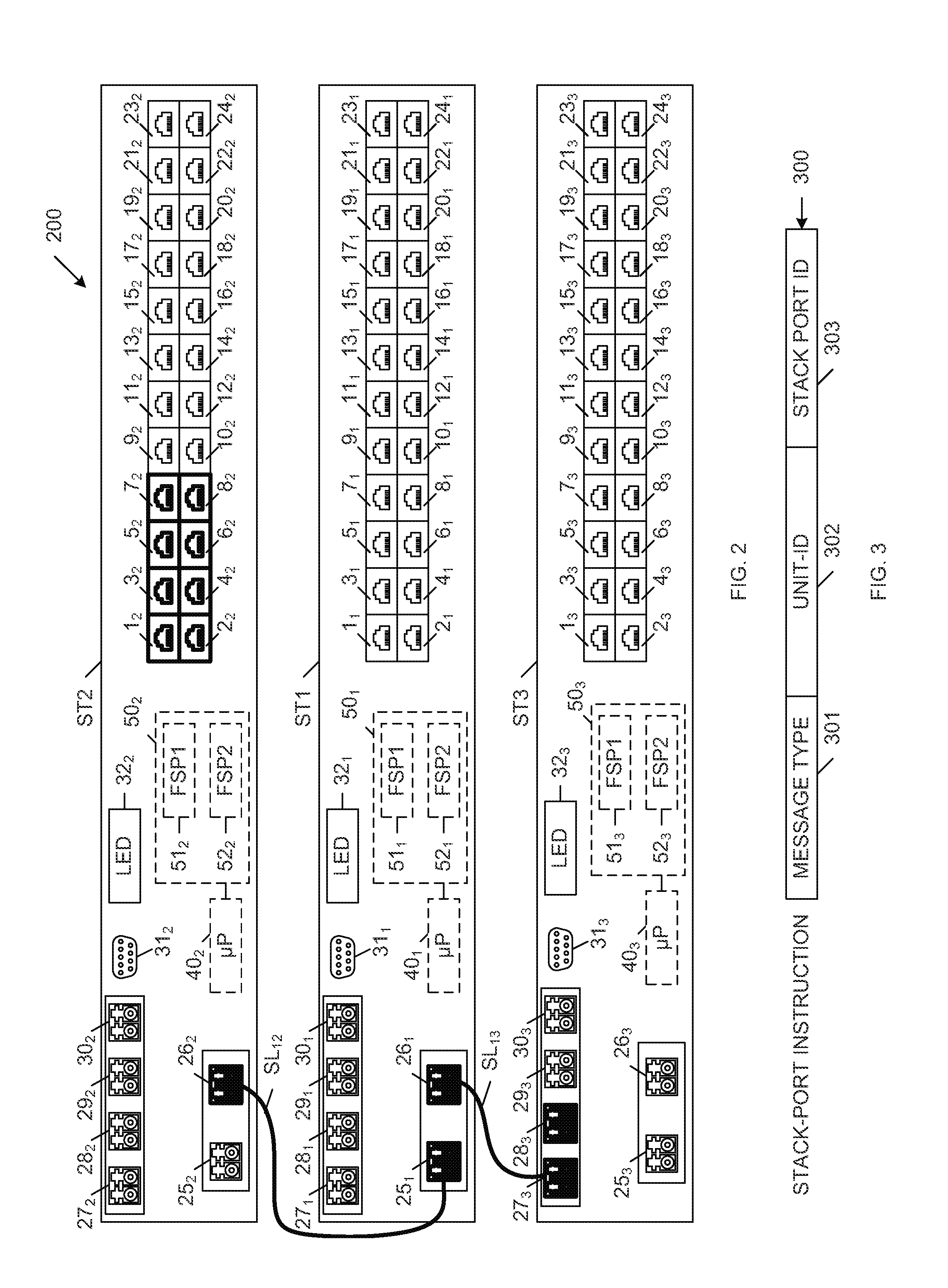Flexible stacking port
a stacking port and flexible technology, applied in the field of stackable network switches, can solve the problems of inflexible chassis-based system configuration, large initial cost associated with purchasing the chassis/backplane, and effectively ‘wasted’ dedicated stacking ports, etc., and achieve the effect of saving the user
- Summary
- Abstract
- Description
- Claims
- Application Information
AI Technical Summary
Benefits of technology
Problems solved by technology
Method used
Image
Examples
Embodiment Construction
[0015]FIG. 1 is a block diagram of a stackable device (network switch) ST1 in accordance with one embodiment of the present invention. Stackable device ST1 includes 10 / 100 / 1000 Mb ports 11-241, 10 Gb ports 251-301, direct serial interface 311, LED display 321, processor 401 and memory 501 (which includes registers 511 and 521). Each of ports 11-241 includes a copper-based module capable of transferring data at up to 1 Gigabit per second (Gbps) (full-duplex), and each of ports 251-301 includes a fiber-based module capable of transferring data at speeds up to 10 Gbps (full-duplex). Because of their relative data transfer speeds, ports 11-241 may be referred to as low-bandwidth ports, and ports 251-301 may be referred to as high-bandwidth ports. Although stackable device ST1 includes 24 low-bandwidth ports and six high bandwidth ports, it is understood that stackable device ST1 may have other numbers of ports in other embodiments. In one embodiment, low-bandwidth ports 11-241, high-ban...
PUM
 Login to View More
Login to View More Abstract
Description
Claims
Application Information
 Login to View More
Login to View More - R&D
- Intellectual Property
- Life Sciences
- Materials
- Tech Scout
- Unparalleled Data Quality
- Higher Quality Content
- 60% Fewer Hallucinations
Browse by: Latest US Patents, China's latest patents, Technical Efficacy Thesaurus, Application Domain, Technology Topic, Popular Technical Reports.
© 2025 PatSnap. All rights reserved.Legal|Privacy policy|Modern Slavery Act Transparency Statement|Sitemap|About US| Contact US: help@patsnap.com



